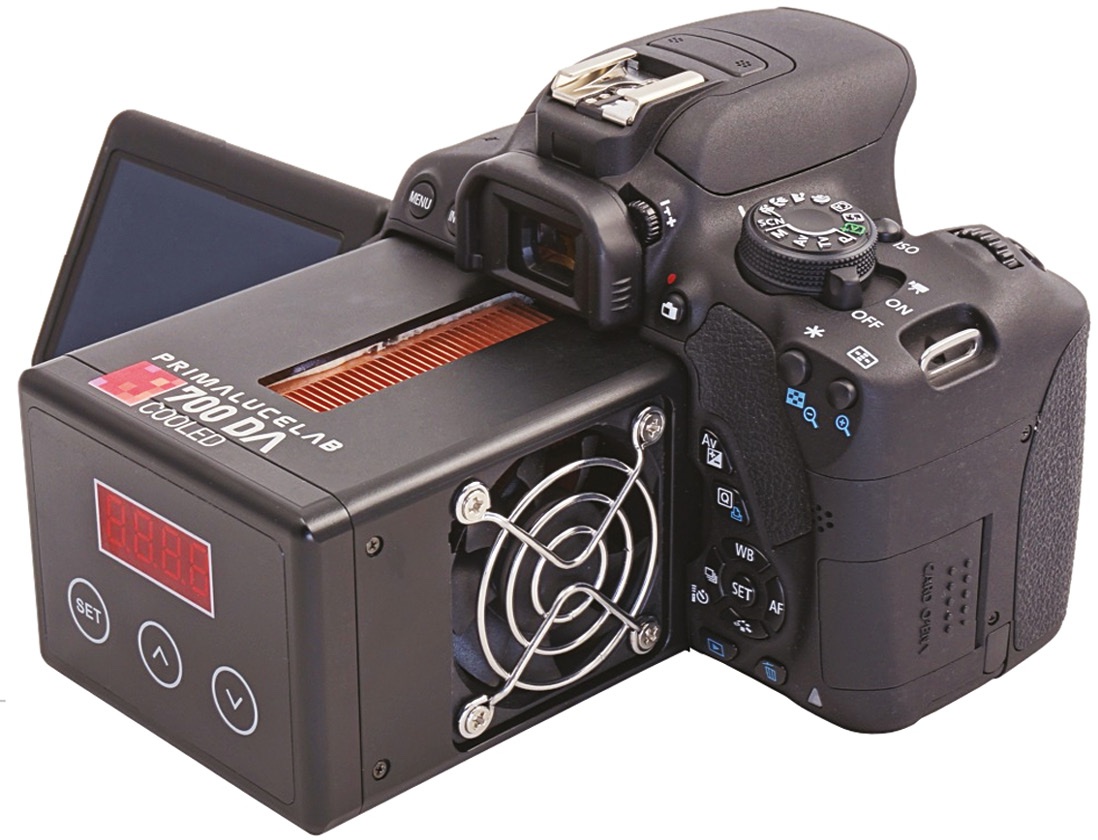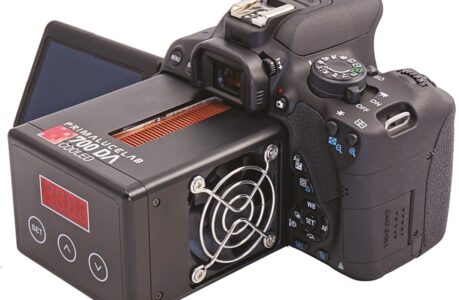Introduction
Astrophotography has come a long way in recent years, allowing enthusiasts and professionals alike to capture breathtaking images of celestial objects. However, achieving the highest quality astrophotos often requires overcoming challenges related to noise and temperature fluctuations in the camera sensor. This is where camera cooling technology comes into play. In this article, we will delve into the fascinating world of astrophotography and explore the numerous benefits of camera cooling systems. From reducing noise to extending exposure times, camera cooling has revolutionized the field and unlocked the secrets of the universe.
The Challenge of Astrophotography
Astrophotography is the art of capturing images of objects in the night sky, such as stars, planets, galaxies, and nebulae. Unlike traditional photography, astrophotography involves long exposure times, sometimes lasting several minutes or even hours. During these extended exposures, the camera sensor can heat up, leading to a phenomenon known as thermal noise. Thermal noise introduces unwanted artifacts and reduces image quality, making it a significant challenge for astrophotographers.
The Role of Camera Cooling
1. Reducing Thermal Noise
Camera cooling systems are designed to address the issue of thermal noise by lowering the temperature of the camera sensor. These systems use thermoelectric coolers or Peltier devices to actively cool the sensor. By maintaining a stable, low temperature, camera cooling effectively minimizes the generation of thermal noise during long exposures.

2. Extended Exposure Times
One of the most significant advantages of camera cooling is the ability to capture longer exposures. Longer exposure times allow astrophotographers to collect more light from distant celestial objects, resulting in brighter and more detailed images. This extended exposure time is particularly useful when photographing faint deep-sky objects that require hours of exposure to reveal their intricate details.
3. Improved Signal-to-Noise Ratio
A crucial aspect of astrophotography is achieving a high signal-to-noise ratio (SNR). A higher SNR means that the desired signal (light from the celestial object) is more prominent compared to unwanted noise. Camera cooling significantly improves the SNR by reducing noise, resulting in clearer and more detailed images with greater contrast.
4. Consistent Performance
Temperature fluctuations can wreak havoc on image quality, especially in regions with variable weather conditions. Camera cooling systems help maintain a consistent sensor temperature, ensuring that astrophotographers can capture high-quality images even in challenging environmental conditions.
Types of Camera Cooling Systems
1. Passive Cooling
Passive cooling relies on the camera’s natural heat dissipation capabilities and external factors like ambient temperature and airflow. While it can help reduce sensor temperature slightly, passive cooling is not as effective as active cooling methods. Astrophotographers often use additional tools, such as heat sinks and thermal blankets, to enhance passive cooling.
2. Active Cooling
Active cooling, on the other hand, uses technology to actively lower the camera sensor’s temperature. The most common method involves thermoelectric coolers (TECs) or Peltier devices. These devices use the Peltier effect to transfer heat away from the sensor, effectively cooling it. Active cooling systems can achieve more significant temperature reductions and maintain stability during long exposures.
The Impact on Image Quality
1. Reduced Noise
The primary benefit of camera cooling is the reduction of noise in astrophotographs. Noise manifests as random variations in pixel values and can take on different forms, including read noise, dark current noise, and thermal noise. Camera cooling helps mitigate these noise sources, resulting in cleaner and more detailed images.
2. Sharper Stars and Fine Details
Reducing noise through camera cooling enhances the quality of astrophotos by producing sharper stars and revealing fine details in celestial objects. This improvement is particularly noticeable in deep-sky astrophotography, where faint structures and subtle features are often obscured by noise.
3. Vibrant Colors
By reducing noise and improving the SNR, camera cooling systems also enhance the color accuracy of astrophotographs. The vibrant and true-to-life colors of galaxies, nebulae, and other celestial objects become more apparent, captivating viewers with the beauty of the universe.
Choosing the Right Cooling System
1. Dedicated Astrophotography Cameras
Many astrophotographers opt for dedicated astrophotography cameras that come equipped with built-in cooling systems. These cameras are specially designed for long-exposure astrophotography and offer the convenience of integrated cooling technology.
2. DSLRs and Mirrorless Cameras
For those who prefer using traditional DSLRs or mirrorless cameras, external cooling units can be attached to achieve the desired temperature reduction. These units are typically designed to fit specific camera models and can be controlled remotely, allowing adjustments without touching the camera.
3. Budget Considerations
The choice between a dedicated astrophotography camera with built-in cooling and an external cooling unit often comes down to budget considerations. Dedicated cameras may be more expensive, but they offer seamless integration of cooling technology. External cooling units can be a cost-effective solution for astrophotographers on a budget, as they can be used with existing camera gear.
Real-World Applications
1. Deep-Sky Astrophotography
One of the most significant applications of camera cooling is in deep-sky astrophotography. Deep-sky objects, such as distant galaxies and nebulae, require long exposures to capture their intricate structures. Camera cooling allows astrophotographers to extend exposure times, revealing the hidden beauty of these celestial wonders.
2. Planetary Imaging
While not as long as deep-sky exposures, planetary imaging benefits from camera cooling as well. Cooling helps reduce noise in planetary images, resulting in sharper details and more pronounced surface features on planets like Jupiter and Saturn.
3. Lunar Photography
When photographing the moon, camera cooling can enhance the clarity of lunar surface details, such as craters and mountain ranges. The reduction in noise ensures that lunar images are sharp and packed with fine features.
The Role of Image Calibration
To maximize the benefits of camera cooling, astrophotographers often engage in a process called image calibration. Image calibration involves several steps, including dark frame subtraction, flat field correction, and bias frame subtraction. These steps help remove any remaining imperfections in astrophotos, further improving image quality.
Overcoming Challenges
While camera cooling offers numerous advantages, it’s essential to be aware of potential challenges and considerations:
1. Power Requirements
Camera cooling systems, especially active ones, can consume a significant amount of power. Astrophotographers should ensure they have a stable power source, such as a portable battery pack, to avoid interruptions during long imaging sessions.
2. Dew Formation
Cooling the camera sensor can lead to dew formation on the camera lens or corrector plate of a telescope. To combat this issue, astrophotographers often use dew heaters or dew shields to keep optics clear.
3. Weight and Portability
External cooling units can add weight to the imaging setup and may impact portability. Astrophotographers should consider the practicality of their chosen cooling solution, especially if they plan to travel to remote or dark-sky locations.
Camera Cooling for Astrophotography
In the world of astrophotography, camera cooling has emerged as a game-changer. By reducing thermal noise, extending exposure times, and improving the overall quality of images, camera cooling systems have allowed photographers to capture the wonders of the universe in unprecedented detail. Whether you’re an amateur stargazer or a seasoned astrophotographer, understanding the benefits of camera cooling is key to unlocking the full potential of your celestial pursuits.
As technology continues to advance, camera cooling systems will likely become even more accessible and efficient, further revolutionizing the field of astrophotography. With the right cooling solution and a passion for exploring the cosmos, the sky’s the limit in your quest to capture the beauty of the universe.

